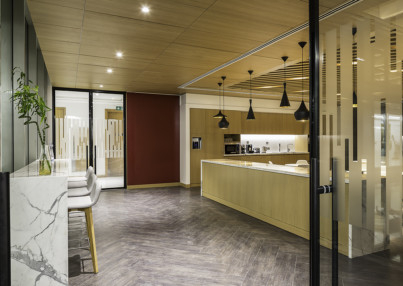
Mention ‘smart office’ and visions of highly futuristic technologies and design usually spring to mind,” says Steven Charlton, principal managing director of architecture and design firm, Perkins+Will Middle East. “However, the essence of a smart office is really about one thing: releasing the full potential of a workforce through intuitive design.”
Steven should know. His team has been behind the designs of stylish and smart offices at companies such as LinkedIn Corporation, Oracle, Google, Microsoft, Allen and Overy, MAF, Adidas Group, Ellington, Microsoft, Coutts, Emaar and more. If you’re concerned that your budget would never allow for the creation of a smart space, you’ll be happy to hear that creating a smart office doesn’t have to be as complicated or expensive as it sounds. “Because smart offices are designed to facilitate performance, companies don’t necessarily need to spend hundreds of thousands to create a smart space,” says Charlton.
Here are some design tips that Charlton offers.
It’s all in the details
The first step to creating a smart office is a detailed workplace analysis. This will help you understand the behaviours and patterns of the employees. By observing the workplace over a period of time, you can understand the intricacies of unique human interactions and determine how elements of design can promote or hinder productivity. A well-designed space fosters productivity, collaboration and innovation. A badly designed space can do quite the opposite. Considering the investment of a new office, which in this region will typically have a life cycle of five to seven years, it’s essential that design is timeless. Whether you walk into an office tomorrow or five years from now, it should still feel fresh and modern.
Smart and stylish
Smart products include ergonomic designs that support health and comfort, naturally leading to improved productivity and focus. As we are aware, information technology-based products are constantly revolutionising the workplace and influence how users interact with one another and the environment itself. Examples include hologram video-conferencing and robotic avatars. In terms of how to keep smart offices stylish, smart products tend to be very simplistic aesthetically, which lends well to timeless design. Smart technology, at its best, will fit naturally into the space, not dominate it. When you get to a place where futuristic technology is the anchor for your aesthetic, at the very least you risk being kitschy and at the very worst you are creating design around technology which may be dated in a short time. Where technology meets design aesthetic, the key really is simplicity — both in terms of appearance and accessibility — which ultimately keeps a space feeling fresh and modern.
Live and work
What we’re seeing across the board is a movement towards merged environments. Gone are the days of hard walls and impersonal environments; instead, we are moving towards a “living office”. We now see a big overlap between residential and even hospitality functions within the modern workspace, with areas dedicated to relaxation and wellness being of high importance.
Go natural
I’m really excited to say that we’re seeing a trend towards nature-driven design. More and more, building architecture is taking into account how the exterior can be designed to fit within its surroundings and how natural light and greenery can influence indoor/outdoor spaces. This is beneficial not just from a user-experience perspective, but intelligent architectural design can also support building efficiency and reduce carbon footprint. We’re getting closer to His Highness Shaikh Mohammad Bin Rashid Al Maktoum, Vice-President and Prime Minister of the UAE and Ruler of Dubai’s 2021 Vision of improving the quality of air, preserving water resources, increasing the contribution of clean energy and implementing green growth plans.











